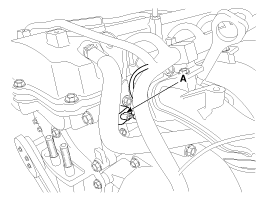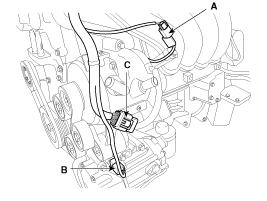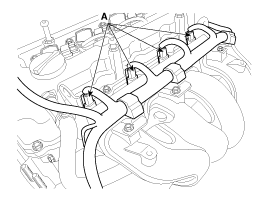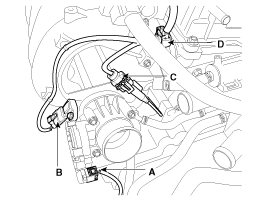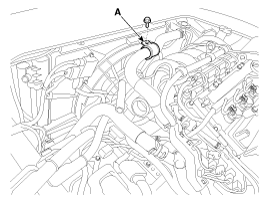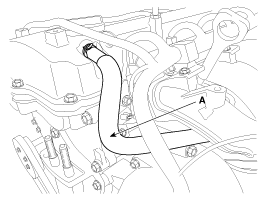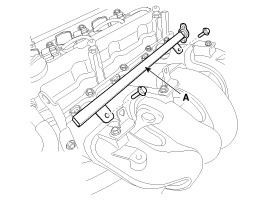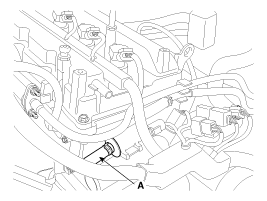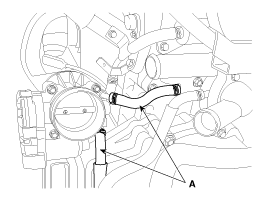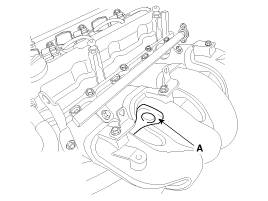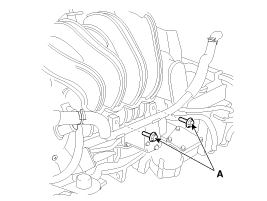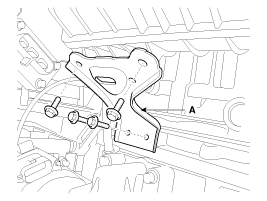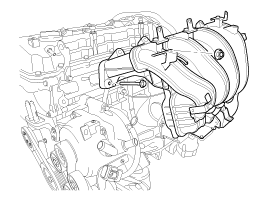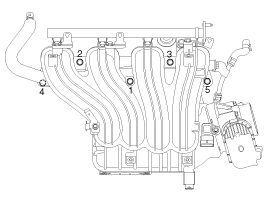Kia Optima Hybrid: Intake And Exhaust System / Intake Manifold Repair procedures
| Removal and Installation |
| 1. |
Remove the engine cover. |
| 2. |
Disconnect the battery negative terminal.
|
| 3. |
Remove the air cleaner assembly. (Refer to Engine and transaxle assembly in this group) |
| 4. |
Remove the under cover. (Refer to Engine and transaxle assembly in this group) |
| 5. |
Disconnect the wiring connectors and harness clamps, and
remove the wiring and protectors from the cylinder head and intake
manifold.
|
| 6. |
Remove the radiator upper hose clip (A).
|
| 7. |
Disconnect the positive crankcase ventilation (PCV) hose (A).
|
| 8. |
Remove the delivery pipe & injector assembly (A). (Refer to FL group)
|
| 9. |
Disconnect the purge control solenoid valve (PCSV) hose (A).
|
| 10. |
Disconnect the throttle body coolant hoses (A). (if equipped)
|
| 11. |
Remove the oil level gauge (A).
|
| 12. |
Remove the electric water pump (EWP) inlet pipe mounting bolts (A).
|
| 13. |
Remove the intake manifold stay (A).
|
| 14. |
Remove the intake manifold (A) with the gasket.
When installing the intake manifold, tighten the bolts and
nuts with pre-torque first, and then tighten the bolts and nuts with
specified torque in the sequence shown.
|
| 15. |
Installation is reverse order of removal. |
 Intake Manifold Components and Components Location
Intake Manifold Components and Components Location
Components 1. Intake manifold assembly 2. Intake manifold gasket3. ETC (Electronic throttle body)4. Intake manifold stay ...
 Exhaust Manifold Components and Components Location
Exhaust Manifold Components and Components Location
Components 1. Heat protector2. Exhaust manifold3. Exhaust manifold gasket4. Exhaust manifold stay ...
Other information:
Kia Optima Hybrid (TF HEV) 2016-2020 Service Manual: Power Door Mirror Actuator Repair procedures
Inspection 1. Remove the front door quadrant delta cover. (Refer to the BD group - "Front door") 2. Disconnect the power door mirror connector from the harness. 3. Apply battery voltage to each terminal as shown in the table and verify that the mirror operates properly. Mirror Heater Inspection Turn ...
Kia Optima Hybrid (TF HEV) 2016-2020 Service Manual: Components and Components Location
Component Location 1. Driver power window switch2. Door lock switch3. BCM (Body Control Module)4. Front door lock actuator5. Rear door lock actuator6. Trunk lid open actuator7. SJB (Smart Junction Box) ...

